16. Elliot Carver (Jonathan Pryce – ‘Tomorrow Never Dies’)
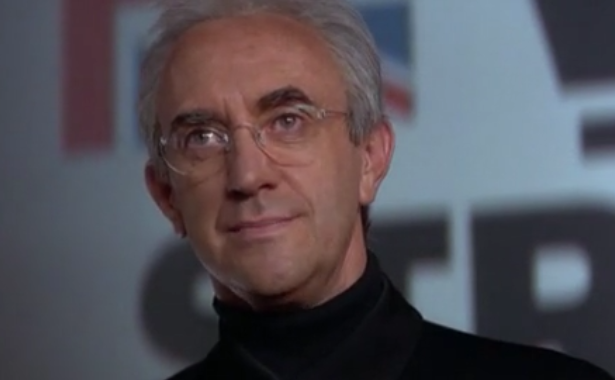
Following the thrilling, vendetta-driven smarm of Alec Travelyan comes the zany Elliot Carver, a business tycoon intent on starting World War III so his press empire can win the ratings war. Already operating around an absurd plot, ‘Tomorrow Never Dies’ prioritises sending up ‘twenty-four-hour news culture’ and real-life media barons over rounded characters, and this Bond baddie doesn’t cope well with the attempted satire.
Whilst Jonathan Pryce relishes his pantomime-portrayal of a villain that feels like a reject from the mid-Moore era, in the year the first ‘Austin Powers’ was released, this Bond needed something a little more grounded. ‘The distance between insanity and genius is measured only by success’ quips the arrogant Carver, and proving his point, Pryce’s hammy turn as the fiendish media mogul should be remembered as ridiculously melodramatic rather than intelligently over-played.
15. Rosa Klebb (Lotte Lenya – ‘From Russia With Love’)
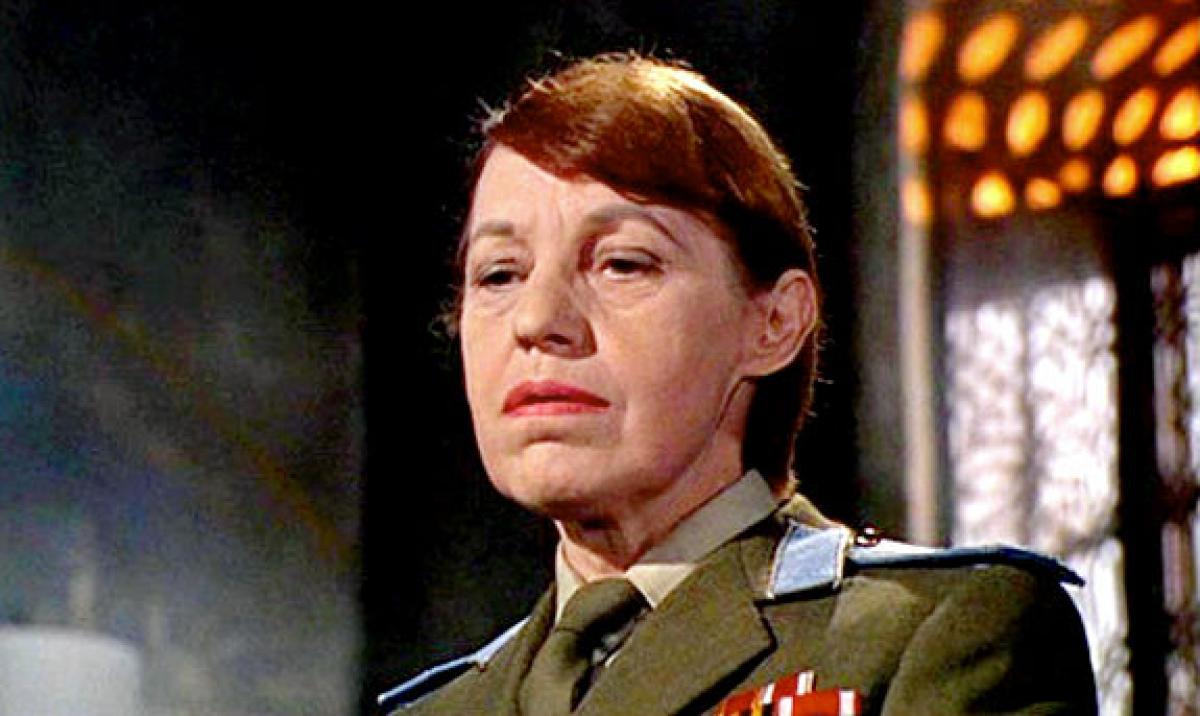
Chilling, cold and calculating, Spectre-trained ex-convict Red Grant is a highlight not only of ‘From Russia With Love’ but of the franchise as a whole, and his character- never more exciting than when pitting wits and fists against Connery’s 007 on the Orient Express – is held in high regard by fans. But Red Grant is only henchman to Rosa Klebb, and Rosa Klebb is only puppet to mastermind ‘Number 1’- here making his mysterious, cat-stroking debut.
Sandwiched between such fabled villains, and in a classic entry also featuring legendary Bond ally Kerim Bay and a catalogue of celebrated sequences, the character of Klebb gets lost despite her special shoe and the punchy performance of Lotte Lenya.
14. Karl Stromberg (Curd Jürgens – ‘The Spy Who Loved Me’)
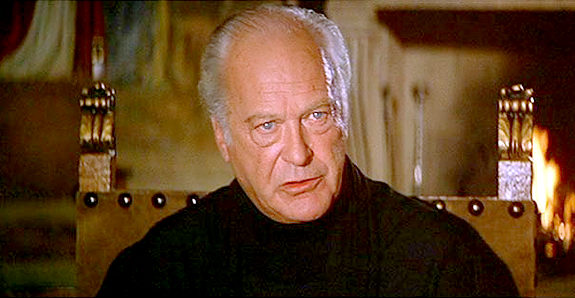
With ‘You Only Live Twice’ and ‘The Spy Who Loved Me’ not only sharing the same director, but also essentially the same plot, it’s perhaps unsurprising that the films villain- intent on orchestrating a full-blown nuclear war and resetting civilisation from his underwater palace– was initially written as Blofeld. Only legal issues around character rights led to his first appearance since ‘Diamonds are Forever’ being abandoned, and to shipping magnate Karl Stromberg becoming the first villain to be purely created for the film series.
Still bearing similarities to Blofeld, and with successor Hugo Drax unleashing a plan that again carried more than a passing resemblance to Stromberg’s, this baddie is perhaps not as distinctive as he could be.
But ‘The Spy Who Loved Me’ blended just the right amount of comedy and drama with a good dose of stunt-filled action in a film that, along with ‘Moonraker’, stands as the pinnacle of Moore’s Bond reign. So, whilst Stromberg’s webbed fingers, dastardly drawl and symbolic obsession with the sea don’t make him a classic villain, Curt Jurgens does more than enough to be warmly remembered as an integral part of a great film.
13. Emilio Largo (Adolfo Celi – ‘Thunderball’)
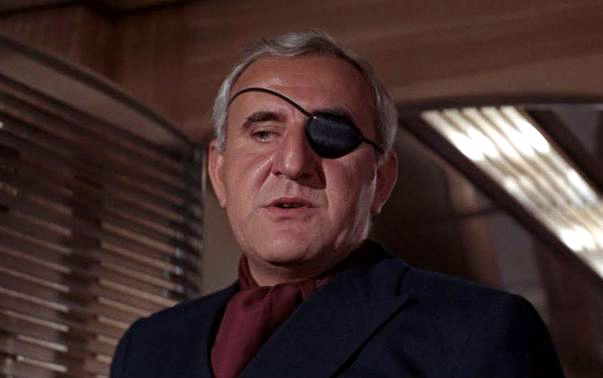
Considered among the best by many fans, ‘Thunderball’ has many strong features, but James Bond- here played for a fourth time by a Sean Connery still having fun- and villain Largo, aren’t the strongest. Henchwoman Fiona and ‘Bond-girl’ Domino are both interesting and complex and it’s the shifting dynamic between these women, Bond and Largo that remains the most distinctive element of a film that’s remembered as much for its underwater cinematography as it is for its plot.
Domino’s disdain of Largo is intense and palpable- she is his mistress and essentially his prisoner- and when Bond tells her Largo is responsible for her brother’s death, the hatred reaches boiling point. Domino’s affair with 007 is less for pleasure and more for mutual benefit- Bond must foil Largo’s evil plan and Domino wants Largo dead. Largo (‘Number 2’) is a fine character in his own right- the first meeting with Bond at the casino; the civil conversations showing fake respect; the much-parodied SPECTRE meeting- it’s all good, but Fiona Volpe (‘Number 10’), steals the evil limelight from right in front of his eye.
Another villain ultimately controlled and therefore overshadowed by Blofeld, Largo is a victim of the more successful elements, and more successful characters of ‘Thunderball’.
12. Dr. Kananga/ Mister Big (Yaphet Kotto – ‘Live and Let Die’)
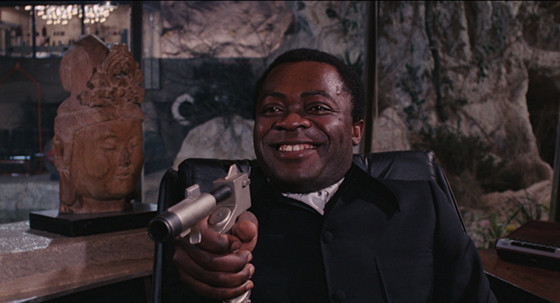
Roger Moore’s first Bond (and arguably his finest), ‘Live and Let Die’ does what many of the 70’s instalments did: it reacts to the times. ‘The Spy Who Loved Me’ brings back the villainous master-plan, the lair, and the army of henchmen as a reaction to the two-man duel (and perceived commercial failure) of ‘The Man with the Golden Gun’. ‘Moonraker’ responds to the sci-fi renaissance of the time whilst in turn ‘For Your Eyes Only’ retaliates to that films excesses by toning things right back down. ‘Live and Let Die’ reacts to the ‘blaxploitation’ films of its era by inhabiting that same world, and the results are excitingly fresh in a Bond film that stands out as a unique instalment.
The primary villain of ‘Live and Let Die’, played by the talented Yaphet Kotto, is also a unique proposition. Technically Kotto plays two separate characters: island dictator ‘Dr. Kananga’, and the gang-leading drug-baron ‘Mr. Big’ he creates to carry out his opium business undetected. He plays both with distinction- Kananga as menacing thinker, Mr Big as irritable extrovert.
His relationship with Bond-girl Solitaire is particularly memorable- he sees the medium as a possession rather than a person and the occult environment they both inhabit lends the film an imitable charm. Also highlights are Kananga’s henchmen Whisper and Tee Hee, both of these distinctive baddies are worlds away from the forgettable non-entities of latter-Moore adventures.
Sadly, Kananga’s nuances seem to get forgotten as ‘Live and Let Die’ nears its climax, especially when he meets his explosive end and the film veers from voodoo to vacuous. But overall, he is an engaging and idiosyncratic villain. The ‘did you touch her’ scene in which he reveals his alter-ego to Bond stands as a fantastic example of Moore’s 007 at his best, pushed to his excellent limits by a noteworthy enemy.
11. Le Chiffre (Mads Mikkelsen – ‘Casino Royale’)
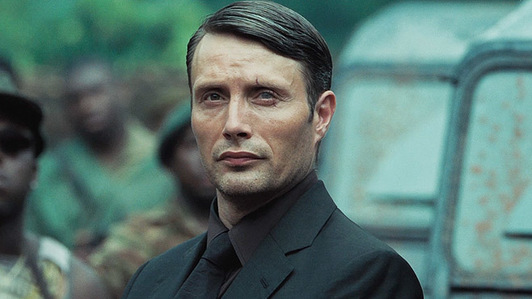
With the reboot button firmly hit after ‘Die Another Day’, Brosnan’s tenure was over- his efforts at making 007 more than just a walking parody, washed away. Maybe if he’d looked over his shoulder he would have seen it coming- the computer-generated wave, the knife wielding secret agents riding its crest, blades aimed squarely at his back… Cue Daniel Craig’s Bourne-again Bond, free-running onto screens in a guise that respects the Fleming source whilst remaining current.
Ironically for Brosnan, ‘Casino Royale’ succeeds in addressing what he yearned for all along- the true character of Bond- his nature, his purpose, and, crucially, his relationships. It’s because of this- as well as the able hand of Martin Campbell and skilled pen of Paul Haggis- that allies and enemies no longer exist purely for James Bond to punch, kiss, or quip at. The distinct impression is that these characters inhabited this world long before 007 entered their lives, and will continue to after he leaves… If they survive.
The villain of the film, Le Chiffre (French for ‘The Number’), is the strongest example of this for two reasons. Firstly, he’s a Fleming creation and it shows. Secondly, Danish actor Mads Mikkelson plays him with utter sincerity- the campy fun of Gustav Graves is nowhere to be seen here, replaced with a real actor portraying a real character with his own issues, and more importantly, his own motives. In terrorist banker and extreme gambler Le Chiffre’s world- Bond is the antagonist- and when he thwarts his plan and places him in direct danger, the stakes are palpably raised.
Motives. Goals. Raised stakes. The fundamentals of good story and the basis for great character. Le Chiffre has all three in spades, making him not just a captivating villain, but an engrossing man.
10. Hugo Drax (Michael Lonsdale – ‘Moonraker’)
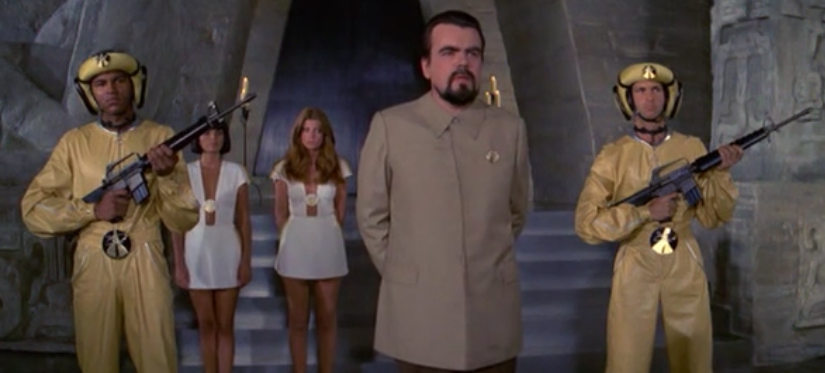
After plunging to the depths of the sea in ‘The Spy Who Loved Me’, Sir Roger is back, and this time he’s aiming for the skies and beyond in ‘Moonraker’- a delicious adventure that regularly soars away with itself. But for every ludicrous escapade Bond enjoys here, there’s a forgotten gem of a moment: Jaws finally popping his cork is silly, yes, but the pheasant-hunting ‘you missed’ trip with bad-guy Drax is vintage 007.
At first, Drax’s dry impassiveness is easily mistaken for bored laziness, but in an instalment that frequently veers towards ridiculous, his easy-going nonchalance is not only refreshing, but strangely eccentric to a series that is overly-reliant on sinister mega-villains.
9. Max Zorin (Christopher Walken – ‘A View to a Kill’)
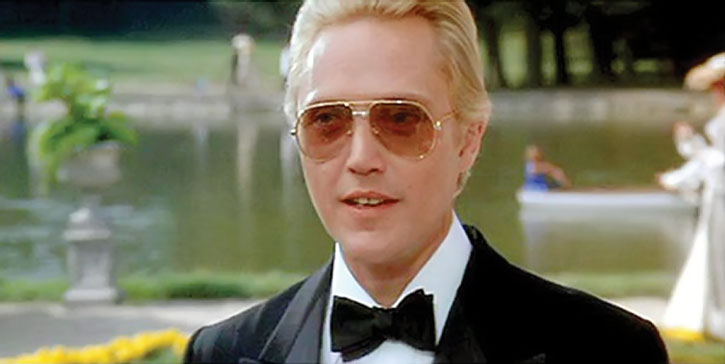
Sir Roger Moore’s reign as 007 stutters to a stop in a film where James Bond is sadly an afterthought in an otherwise quality cast of characters (not you, Stacey Sutton) stuck in a structural mess of a movie.
Christopher Walken’s Max Zorin is a breath of fresh air after the wooden villains of ‘Octopussy’ and ‘For Your Eyes Only’; his origin story more comic book than Fleming novel and his on-screen presence electrifying and unpredictable. Henchwomen Grace Jones is a one-off too, her switch from bad to good offering a high-five moment in an instalment full of mediocre minutes.
Rumour has it that David Bowie was wanted for the Zorin role, and though the bottle-blond hair and bony smile suggests some truth to this, it’s hard to imagine another actor owning the character as well as Walken does here, carrying the Moore era over the finish line with a crazed, gritted grin.